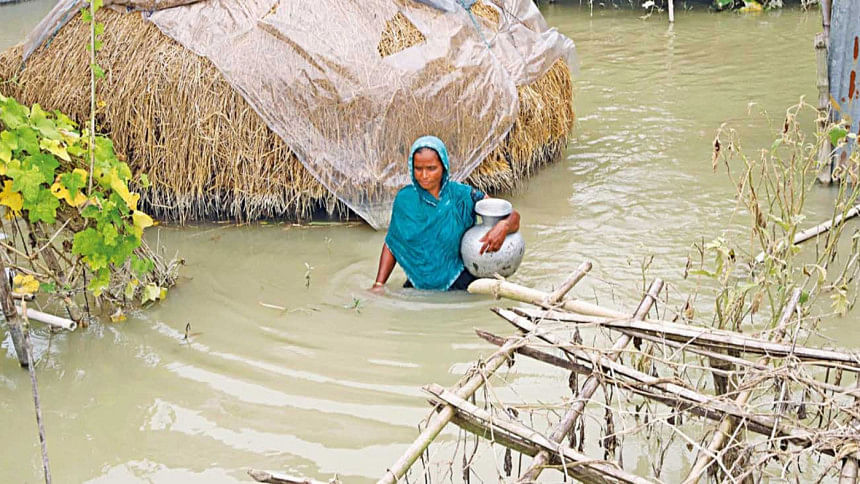Developing multiple strategies as part of the National Adaptation Plan for Bangladesh

In last week's column, I proposed that the Bangladesh National Adaptation Plan (NAP) that is now being developed should be innovative and not just a business-as-usual (BAU) report that will gather dust on a shelf, as many such plans have done in the past. I argued that we should focus on constructing the foundations for enhancing capacity building of many different institutions in the country to enable them to continue the implementation of the adaptation plans after the initial NAP exercise ends after a year or so.
But how can we help different ministries, agencies, training institutes, universities, private organisations and NGOs to develop their own respective adaptation plans for enhancing their capacity to adapt to climate change over the next ten years?
This would require each of the members of the team of national and international consultants, who have been selected by the government to carry out the task of developing the NAP over the next year or so, to be given the responsibility of engaging with several such key institutions and helping them develop their respective adaptation plans. The Department of Environment (DOE), who are in charge of preparing the NAP and also UNDP, who is supporting, should agree to such a non-BAU approach.
This will work only if the main sponsors of the NAP agree that the Bangladesh NAP should indeed aim to be an innovative one and go well beyond simply writing a report (although that still remains a basic output of the exercise).
One way to ensure that this is possible is for the core team to quickly come up with a basic template for any given institute to prepare its own ten year adaptation plan. The different consultants in the NAP team can then be assigned to several institutions who wish to get help in developing their respective adaptation plans.
Thus, the final product of the exercise after a year is not only one NAP in a single report, but rather a series of several dozen Institutional Adaptation Plans (IAPs), which would then be implemented by each institution in turn.
For this to happen, one should follow a basic process in creating a potential template that each institution can develop and implement over the coming years.
The first step in this process is to enable each institution to quickly assess the ways in which their work may be vulnerable to the adverse impacts of climate change. The good news is that most relevant institutions have already done this and many have, in fact, also embarked on different projects, which has resulted in building some basic capacities. Therefore, they can quickly move on to the second step, which will be to assess the specific capacity building needs of each institution and identify ways in which that can be done. This would then be followed by a third step to identify the final impacts after the next ten years and also the outcomes after five years. Thus, the intention should be to enable and assist each individual institution to develop their own adaptation plan and finally help them identify the amount of finance that will be needed and where it may be sourced from.
Another important aspect of the Bangladesh NAP that we can find ways to be innovative about is to reach out to the different national adaptation plan preparation teams in different vulnerable developing countries around the world, and enable a process of peer-to-peer learning and sharing knowledge between countries in South-South as well as South-North global interactions.
Finally, there will need to be a focus on the most vulnerable hotspots of the country, and through local level consultations with different stakeholders, in order to identify potential adaptation needs at the local level that will then have to be planned and implemented. This will result in a set of Local Adaptation Plans (LAPs).
Through these different processes, we can try and come up with ways that the one year NAP exercise results in an effective ten year action plan to ensure that different stakeholders, as well as different parts of the country, have their own adaptation plans as LAPs, and all the major institutions have adaptation plans as IAPs, which will all be part of the National Adaptation Plan. This will indeed be a new and innovative approach to preparing such plans.
Dr Saleemul Huq is the Director of the International Centre for Climate Change and Development at the Independent University, Bangladesh.

 For all latest news, follow The Daily Star's Google News channel.
For all latest news, follow The Daily Star's Google News channel. 



Comments